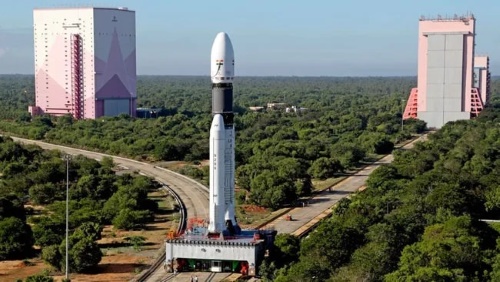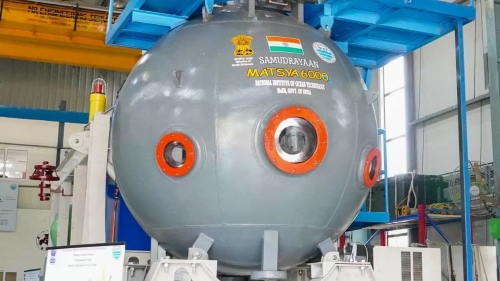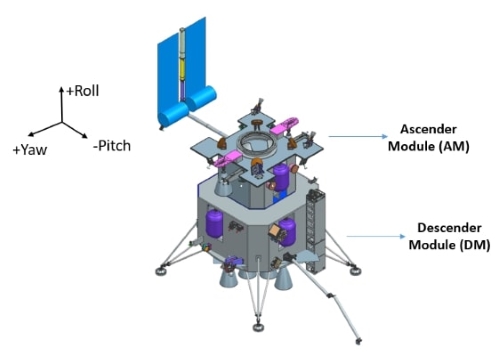India is gearing up for a groundbreaking era in space and deep-sea exploration with three major missions: Gaganyaan (2026), Samudrayaan (2026), and Chandrayaan-4 (2027). In an interview with PTI Videos, Union Minister Jitendra Singh said “The objective of the Chandrayaan-4 mission is to gather samples from the Moon's surface and return them to Earth.”
Economic Times: #Chandrayaan4 to launch in 2027#ISROhttps://t.co/BLiWj37LzU
— Dr Jitendra Singh (@DrJitendraSingh) February 7, 2025
These initiatives aim to push the frontiers of human spaceflight, lunar research, and deep-sea exploration, solidifying India’s position as a global leader in scientific advancements.
Mission Breakdown
Recently ISRO has announced Gaganyan Mission, Samudrayaan, and Chandrayaan 4 missions to launch in 2026 and 2027. Let us see its objectives, its launch year and key features of the mission
| Mission | Objective | Launch Year | Key Features |
|---|---|---|---|
| Gaganyaan Mission 2026 | Send the first batch of Indian astronauts to space | 2026 | Manned mission to Low Earth Orbit (LEO) |
| Samudrayaan Mission 2026 | Explore deep-sea resources & marine biodiversity | 2026 | Manned submersible mission to 6,000m depth |
| Chandrayaan-4 Mission 2026 | Collect & return lunar surface samples to Earth | 2027 | Dual-launch mission using LVM-3 rocket |
Details of Missions which has to be launch
1. Gaganyaan Mission (2026)
ISRO is going to launch the Gaganyaan Mission in 2026 to carry humans first time. This First human spaceflight program of India with astronauts aboard an indigenous spacecraft.Will be launched into Low Earth Orbit (LEO) using ISRO’s GSLV Mk III (LVM-3) rocket. Includes a precursor uncrewed mission carrying 'Vyommitra', a humanoid robot, in 2025 to test systems before the manned flight. Designed to establish India's independent capability for human spaceflight, reducing dependence on foreign agencies.

Source: ISRO
Strategic Importance:
- Enhances India's role in human spaceflight research and future interplanetary missions.
- Strengthens collaboration with global space agencies.
- Opens avenues for commercial space tourism and private sector participation
2. Samudrayaan Mission (2026)
Samundrayaan Mission 2026 is an ISRO deep-sea exploration mission in which ISRO will study about study marine biodiversity, mineral resources, and the seabed. The mission will send a three-member crew in a submersible vehicle to a depth of 6,000 meters. Developed by the National Institute of Ocean Technology (NIOT) in Chennai.

Potential Benefits:
- Unlocks access to critical minerals and rare metals vital for technological advancements.
- Enhances understanding of deep-sea ecosystems and undiscovered species.
- Supports India's Blue Economy vision by utilizing ocean resources sustainably.
- Strengthens India's undersea infrastructure for national security and strategic research.
3. Chandrayaan-4 Mission (2027)
ISRO’s Chandrayaan-4 Mission is India's first lunar sample return mission, aiming to collect and bring back Moon soil and rock samples. Requires two separate launches using the heavy-lift LVM-3 rocket. The mission components will be assembled in lunar orbit before execution. Could involve international collaboration with partners like Russia or NASA.

Source: ISRO
Scientific & Strategic Importance:
ISRO’s scientists will play a very significant and strategic role in upcoming missions in which they will be using advanced planetary research by analyzing the composition and history of the Moon.
To strengthen India's position in lunar exploration, there will be placing it among elite nations.It lays the foundation for future human missions to the Moon and Mars.
Potentially aids in lunar resource utilization, such as Helium-3 mining.
India’s Expanding Space Infrastructure
ISRO is now expanding its infrastructure developments by launching its New Third Launch Pad which is being built to support heavier rockets for advanced missions. ISRO is now making expansion Beyond Sriharikota which is a new launch site in Tamil Nadu’s Tuticorin district that will facilitate small satellite launches. To boost in Space Economy, there has been a currently valued at $8 billion, projected to reach $44 billion by 2035.
Private Sector Participation:
With Musk’s involvement in Space technology, India also has Increased investment & international collaborations can be seen in collaborations with other countries. Now there will be an entry of private space companies under India's new space reforms. There will be many promotions for start-ups and innovation in the sector.
Conclusion
With Gaganyaan, Samudrayaan, and Chandrayaan-4, India is set to achieve historic milestones in space and deep-sea exploration. These missions mark a transformational phase in India's scientific journey, enhancing its global leadership in space technology, marine research, and planetary exploration.
India’s future missions promise not just technological advancements but also economic and strategic benefits, paving the way for a new era of discovery and innovation.
Comments
All Comments (0)
Join the conversation